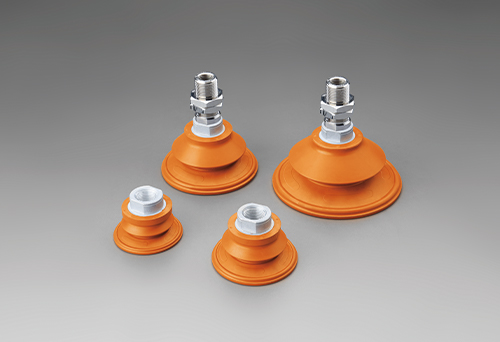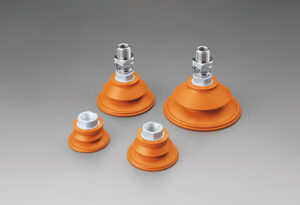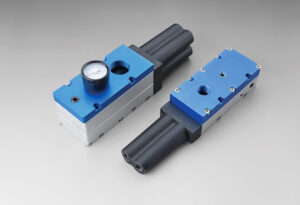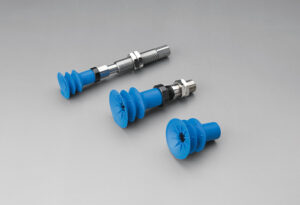Handling delicate glass materials in various industrial settings demands precision and reliability. In such scenarios, suction cups have become crucial, facilitating safe and efficient glass manipulation. As suction cups evolve in design and technology, it becomes imperative to understand their performance intricacies, particularly about vacuum suction cups for glass and their interaction with glass surface characteristics.
This article aims to delve into the intricacies of how glass surface attributes influence the adhesion of suction cups, shedding light on these factors’ pivotal role in ensuring secure glass handling. Whether you’re a professional in the glass industry or an enthusiast seeking the proper custom suction cups, let’s explore how understanding glass surface interactions can guide your decision-making process.

Glass Surface Characteristics and Adhesion
Glass, though seemingly smooth to the naked eye, possesses a diverse range of surface characteristics that significantly impact the performance of suction cups in industrial applications. The level of smoothness and uniformity on the glass surface is critical. Smooth surfaces provide a larger contact area for the suction cup, ensuring adequate adhesion. Microtextures, often invisible to us, can influence the grip of the suction cup. Similarly, coatings applied to the glass, such as anti-reflective or textured coatings, can introduce variations in adhesion behaviour.
Suction cup manufacturers have recognized these complexities and have engineered their products to accommodate various glass surface attributes. It’s important to understand that an optimized design for one glass type might perform less effectively on another due to these nuanced surface characteristics.
Critical Factors Affecting Suction Cup Adhesion
Understanding the underlying factors that contribute to the adhesion capabilities of suction cups is essential for making informed decisions. Suction cups used in industrial applications are carefully designed to create an airtight seal between the cup and the glass surface. This seal enables the creation of a vacuum, which generates a pressure difference that firmly attaches the suction cup to the glass.
Material composition and flexibility are equally important. Modern suction cups are crafted from materials that balance durability and flexibility. This flexibility allows the cup to conform to the glass surface’s contours, ensuring an optimal seal and maximizing adhesion strength.
Vacuum suction cups for glass are available in various designs tailored to different glass manipulation needs. Some plans are better suited for curved glass surfaces, while others are optimized for lifting larger glass panels. Suction cup manufacturers offer a wide range of options to address specific requirements.
Understanding the Interaction Mechanism
The interaction between a suction cup and a glass surface is a delicate balance of forces. When the cup is placed on the glass, the air inside the cup is expelled, creating a vacuum. This vacuum induces a pressure difference that firmly presses the cup against the glass, resulting in adhesion.
The glass surface’s characteristics play a pivotal role in this interaction. A smoother surface allows for a larger contact area, distributing the pressure more effectively. Conversely, textures or imperfections can disrupt the seal, affecting the adhesion strength. It’s akin to how airtight seals on containers work but with the added complexity of considering the glass surface’s unique attributes.
Visualizing this interaction through diagrams helps comprehend the intricate dynamics involved and aids in choosing the right vacuum suction cup for a specific glass type.
Adhesion Performance Across Glass Types
One of the challenges in the realm of suction cups is that different glass types offer varying degrees of adhesion difficulty.
Tempered glass, for instance, tends to have a smoother surface due to the manufacturing process, which can enhance adhesion. Frosted or textured glass, on the other hand, presents a different scenario. The presence of texture or patterns can create air pockets that reduce the effective contact area, potentially impacting adhesion strength.
Coated glass, often treated with anti-reflective or other functional coatings, introduces additional complexities. These coatings alter the smoothness and chemical properties of the glass surface, influencing how the suction cup adheres.
It’s crucial to consider the type of glass you’re working with and consult suction cup manufacturers who can guide you toward the right solution based on the glass’s attributes.
Optimizing Adhesion for Specific Scenarios
While standard vacuum suction cups for glass perform exceptionally well in many scenarios, challenging conditions can sometimes arise. High-humidity environments can affect the seal’s integrity due to moisture interfering with the vacuum. Similarly, extreme temperature variations can impact the flexibility of the suction cup, affecting its ability to conform to the glass surface.
To address these challenges, advancements have been made in the suction cups industry. Manufacturers have developed adaptive suction cups that can sense and adjust to environmental changes. These cups ensure consistent adhesion even in fluctuating conditions, contributing to safer glass handling and enhanced efficiency.
Considering the environment in which you’ll be using the suction cups is crucial for selecting the appropriate model and ensuring optimal performance.
Selecting the Right Suction Cup for Your Needs
Choosing the ideal vacuum suction cup for your glass handling needs requires thoughtful evaluation. Each glass type and application demands a tailored solution. Here’s a guide to help you navigate the selection process:
- Glass Texture and Characteristics: Assess the glass’s smoothness, texture, and coating. This evaluation will determine the level of adhesion difficulty and guide your choice of suction cup design.
- Dimensions and Weight: Consider the size and weight of the glass panels you’ll handle. Larger and heavier
- Boards require more robust suction cups with higher adhesion strength.
- Environmental Factors: Account for the environment where the suction cups will be used. Consider adaptive suction cups if your operation involves temperature variations or high humidity.
- Application Specifics: Different glass handling tasks, such as lifting, tilting, or rotating, might require specialized suction cup designs. Consult manufacturers for recommendations based on your unique requirements.
- Consultation with Manufacturers: Don’t hesitate to contact suction cup manufacturers. They have the expertise to guide you toward the most suitable solution, considering your needs and challenges.
By carefully assessing these factors, you can make an informed decision, ensuring safety and efficiency in your glass handling operations.
Maintenance and Best Practices
Ensuring the long-term effectiveness of your chosen vacuum suction cups for glass involves proper maintenance and adherence to best practices. Here’s a set of guidelines to help you maintain optimal adhesion performance:
- Regular Inspection: Inspect the suction cups for wear, damage, or degradation.
- Cleaning: Keep the glass surfaces and suction cups clean. Dust, debris, or contaminants can compromise the seal and adhesion.
- Proper Storage: Store suction cups in a clean and dry environment, away from direct sunlight and extreme temperatures.
- Replacement: Replace suction cups as needed, especially if you notice decreased adhesion or visible damage.
- Manufacturer Guidelines: Follow the maintenance instructions provided by the manufacturer to ensure longevity and consistent performance.
By following these practices, you can extend the lifespan of your suction cups and maintain their reliable adhesion capabilities over time.
Conclusion
The interaction between vacuum suction cups for glass and glass surfaces is a nuanced interplay that influences adhesion performance. Whether you’re navigating the challenges of varying glass types, extreme environmental conditions, or specific handling requirements, understanding these dynamics is crucial. Suction cup manufacturers continually innovate to address these complexities and provide solutions that cater to a wide range of glass handling scenarios.
As you embark on your journey to select the ideal suction cups for your glass handling needs, remember that each choice you make based on glass surface characteristics contributes to your operations’ safety, efficiency, and success.








